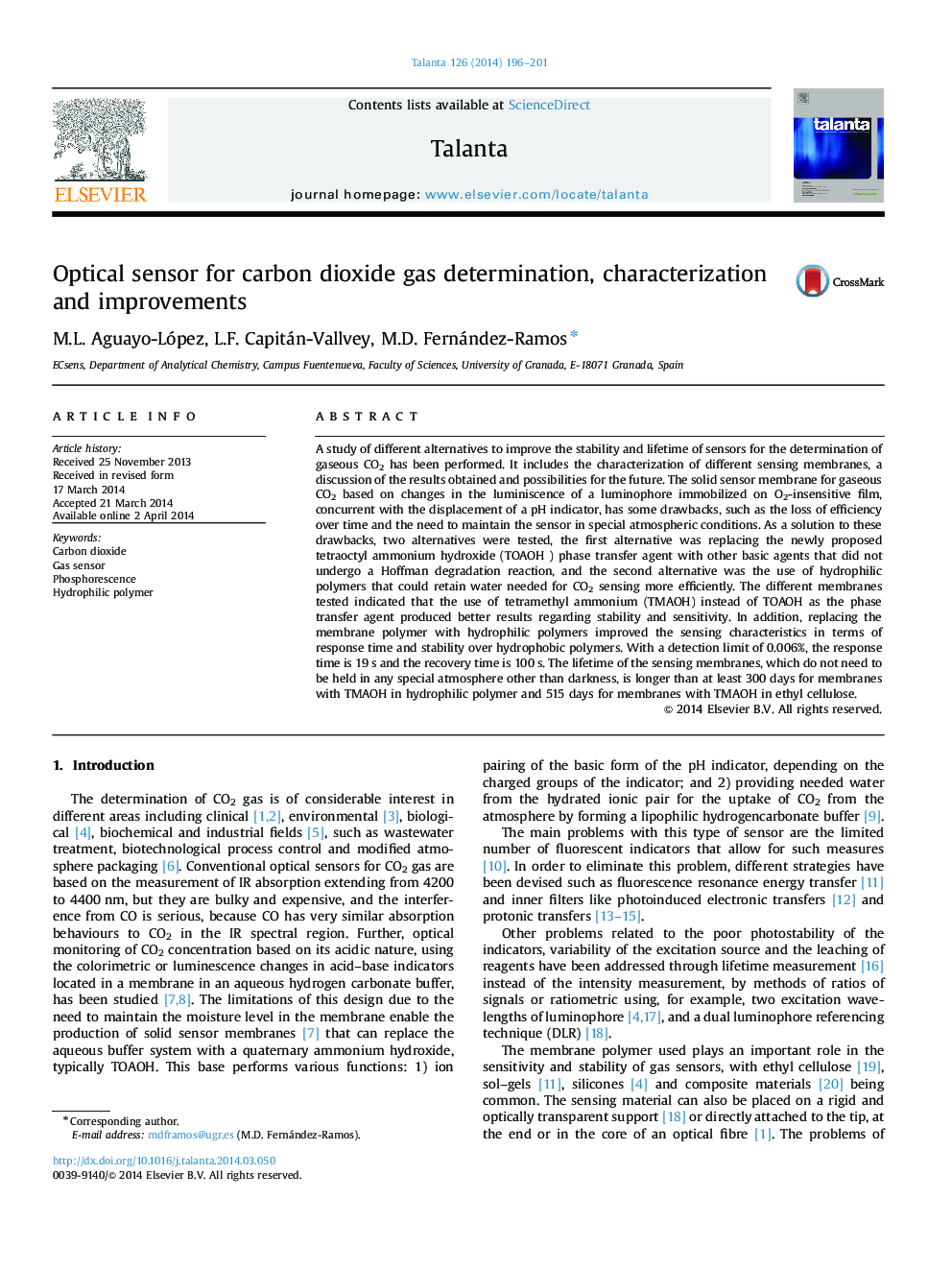| Article ID | Journal | Published Year | Pages | File Type |
|---|---|---|---|---|
| 1242292 | Talanta | 2014 | 6 Pages |
•Improvement of performance and lifetime of dry optical sensor for CO2.•The use of tetramethyl ammonium hydroxide doubles the lifetime of sensing membrane.•The use of hydrophilic Methocel improves the response and characteristic of sensing film.•No need of special atmospheric conditions for storage.
A study of different alternatives to improve the stability and lifetime of sensors for the determination of gaseous CO2 has been performed. It includes the characterization of different sensing membranes, a discussion of the results obtained and possibilities for the future. The solid sensor membrane for gaseous CO2 based on changes in the luminiscence of a luminophore immobilized on O2-insensitive film, concurrent with the displacement of a pH indicator, has some drawbacks, such as the loss of efficiency over time and the need to maintain the sensor in special atmospheric conditions. As a solution to these drawbacks, two alternatives were tested, the first alternative was replacing the newly proposed tetraoctyl ammonium hydroxide (TOAOH ) phase transfer agent with other basic agents that did not undergo a Hoffman degradation reaction, and the second alternative was the use of hydrophilic polymers that could retain water needed for CO2 sensing more efficiently. The different membranes tested indicated that the use of tetramethyl ammonium (TMAOH) instead of TOAOH as the phase transfer agent produced better results regarding stability and sensitivity. In addition, replacing the membrane polymer with hydrophilic polymers improved the sensing characteristics in terms of response time and stability over hydrophobic polymers. With a detection limit of 0.006%, the response time is 19 s and the recovery time is 100 s. The lifetime of the sensing membranes, which do not need to be held in any special atmosphere other than darkness, is longer than at least 300 days for membranes with TMAOH in hydrophilic polymer and 515 days for membranes with TMAOH in ethyl cellulose.
Graphical abstractFigure optionsDownload full-size imageDownload as PowerPoint slide
